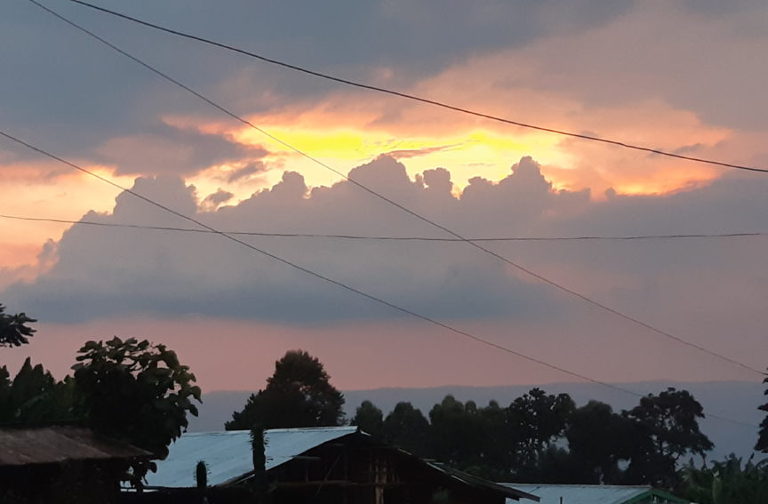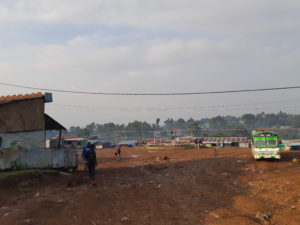The social and ecological environment in southwest Ethiopia is in flux. This is probably the case in most forest communities. Changes in society are also reconfiguring the environment. Little towns and hamlets are growing both in width and height.
The width comes from the increasing number of homes constructed to accommodate the burgeoning population, while the height comes from recently built nearby five-story buildings. Most of the high-rise buildings are hotels and shopping malls.
One can see hundreds of youth in these places, working and loitering around. At the same time, the forests surrounding these small towns are diminishing and roads are awash with forest products. Given the speed of this rural-urban transformation, I worry deeply about how quickly we are heading towards a social and ecological crisis if we do not manage these changes consciously.
The place that I am going to talk about is called Nono Sele. It is a Wereda, the smallest unit in the Ethiopian government structure with autonomy in managing its affairs. Driving into a semblance of a town called Birbirsa, located 700 km away from Addis, you instantly feel how both active and sleepy the place is.
Bus station in Birbirsa
There are many young boys around the bus station, which is a small clearing where the two or three buses that come to the town daily load and offload people. Loud, boisterously jeering at each other and full of laughter. People in this little town meet up in small coffee shops. They were very respectful to me and offered me their seat when I came in for a coffee.
Despite these initial impressions of bustle, life appears to be very relaxed. It rained for a few days while I was there and the mud that followed was horrible. But, fortunately, the town is surrounded by a forest, and everywhere you cast your eyes beyond the shanty roofs of the houses, you see graceful trees.
Graceful trees of Nono Sele
One of the government workers took me for a walk one day, and I witnessed one of the most outstanding sunsets that I’ve ever seen. I took some pictures and was disappointed as usual as the camera never captures the depth and the colour that you see.
Participatory mapping with local communities
I was here with the Movement for Ecological Learning and Community Action Ethiopia (MELCA) to carry out a participatory mapping of the Nono Sele Wereda to explore what kinds of agroecological projects could take place here. Prior to my arrival, a group of researchers from METU University conducted a study on the socioeconomic characteristics, wildlife and flora of the forest.
Forests of Nono Sele
Natural treasures of Nono Sele
- Forest covers 87% of the Wereda. I am not mistaken my friends. 87%!!!!! I never thought that these kinds of places still existed in Ethiopia.
- Individuals in the community own the whole forest and every household possesses a few trees. However, it is the government who manages the forest on their behalf. Anyone who wants to cut a tree must ask permission from the government and must provide an excellent reason to obtain an authorization.
- The whole forest is a honey producing place. People use their trees to hang beehives. You get reddish honey from the wood in the lowlands and whitish from the forest in the highlands. Honey is one of the primary sources of income. As the price of honey is rising, so is the income of the people.
- People use the coffee from the wild coffee trees that grow on their property in the forest. The community manages these trees by clearing the undergrowth and harvesting the coffee in November/ December. Some have started planting coffee using the seeds of the wild coffee trees from the forest.
- The forest is full of spices, especially cardamom and long pepper, which mostly grow on riverbanks. Local knowledge and motivation for harvesting and using these spices are limited, but their availability represents an interesting opportunity.
- What shocked me was the extent to which local cultural practices have eroded. I was astounded to hear the elders explain how their ancestors used to practice rituals like the yearly celebration of the God of the road. The leading cause of this erosion is the spread of main religions, Christianity and Islam, present in every village.
- Interestingly, the community’s sacred places were mainly small roads, not rivers or particular hills or mountains. Not even a big tree. Maybe roads were of particular value to them because they are so critical for connecting forest communities. People here valued their roads as much as I saw Colombians appreciate their rivers. Maybe. But culture related to livelihood, governance and language is still alive.
- Even though honey and coffee are central to their economy, they are also an agricultural community. Their staple foods are maize and enset (false banana). They grow almost all the crops they consume. However, the genetic diversity within their crops is very low compared to the rest of the country. Three varieties of maize, two varieties of wheat and a similar trend in other crops. I found this surprising after working with communities which count their varieties at least in the twenties.
- People purposefully do not use chemicals for their agriculture.
Increasing the agroecological potential of Nono Sele
Given these characteristics, Nono Sele appears to be a fertile place for expanding the range of agroecological approaches applied, an observation which I also shared with the local community, the local government and academics. They all agreed that agroecology is the way forward. So, the question is, what form can it take?
- First, it is important to better understand current practices of local communities and identify methods that could complement and strengthen existing practices. For example, it might be useful to experiment with biofertilizer techniques, like the use of bokashi.
- If they wish so, communities could learn how to manage the spices in the forest and improve their livelihoods by selling them. The good thing is that these spices do not belong to the owners of the woods, they are freely accessible.
- There are many associations in the Wereda. Almost everyone appears to be a member of some group. I think this is an excellent opportunity for social mobilization for agroecology. For example, the groups might decide to create a food manifesto and work on the kinds of foods they are eating. Stable or trans-fat oils, for example, abound in Ethiopia. Almost every hotel uses them to cook food. Food prepared with these oils tastes good to the modern palate, and these oils are cheap and easily transportable. But they have a negative impact on people’s health. The associations could raise awareness among their membership, therefore, about food and nutrition related issues as well as help spread agroecological practices.
- There is strong local support for the youth program developed by MELCA over the years. This program takes youth into the forest, and they connect with their culture, nature and themselves while in the woods. Experience shows that the program gives youth a sense of purpose in their lives, increases their respect for elders and encourages them to protect their environment. It is worth exploring options for scaling up this program and for facilitating the participation of youth in agroecology.
- Although people take good care of the forest, additional benefits, such as increased government protection and new opportunities for local communities, may accrue from linking the forest with the UNESCO Man and Biosphere Reserve Program.
I think that agroecology can be the solution to many woes of forest communities in the southwestern part of Ethiopia for the reasons mentioned above and more. For instance, the area gets lots of rainfall which increases soil acidity. Using agrochemicals under these circumstances would further raise acidity levels in the soil and exacerbate nutrient depletion. However, agroecological measures would have a beneficial effect because they help balance acidity levels and restore nutrient availability in the soil. In addition, the honey, the coffee and other forest products grown using agroecological practices could become sought after products in urban areas like Addis Ababa. These practices can help communities gain control over their own destiny, improve their livelihoods and strengthen their food sovereignty.
I have a soft heart for this part of Ethiopia, and I hope we’ll do everything we can to support local communities and strengthen the well-being of the people and nature.









